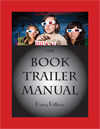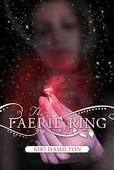Random Acts of Publicity DISCOUNT:

$10 OFF The Book Trailer Manual.
Use discount code: RAP2011
http://booktrailermanual.com/manual
Debut Novel: Spreadsheets Used for Plotting and Revising a Novel
Introduced first in 2007, debut children’s authors have formed a cooperative effort to market their books. I featured Revision Stories from the Classes of 2k8 and 2k9 and this feature returns this year with the Class of 2k11.
Revision
Guest post by Kiki Hamilton
Revision is hard work. There’s no two ways about it. But it is necessary to improve the story – sometimes it’s the way the writer finds the real story. Though there can be times when it feels like the process of revision never ends – it doesn’t have to be overwhelming.
I like to think of it as making a cake. You have to work in layers.
The first layer is the plot structure. There are lots of different ways to draw out the plot or story arc of your novel. I use a color-coded Excel spreadsheet, others use sticky notes – either way is fine – as long as you have some way to see the overall scope of the story.
Divide your story into acts:
• Act 1 is the set-up: identify your characters and the conflict.
• Act 2 begins with a Turning Point which results in rising action.
• Act 3 the conflict increases until it reaches a Point of No Return. This is where we know what the character wants.
• Act 4 begins from the Point of No Return and we rise to the Crisis, which is where we learn what the character needs. From there we move to the Resolution and The End.
The second layer includes: characters, theme, emotions, plot. Once you’ve got your structure in place, take a look at the elements that create your story: Characters, Theme, Emotions, Plot.
Are your characters three dimensional? Is your protagonist well-developed? Do we care about them? Is there a theme present in the story? Here’s a big one for me – is the plot believable? Do the protagonist’s choices make sense?
The third layer contains the supporting elements. This is the time to look at side characters, dialogue, scene transitions, and pacing. Are the side characters necessary? Do they get enough time on stage? Do your characters speak in a believable way? Cliffhangers are great but make sure that when you move from one scene to the next, or one chapter ending to a new chapter, that you do it in a way that your reader can follow the timeline and sequence of events. Also, it’s hard to look at your own work objectively, but try to see where the pace of your story drags and where it might move too quickly.
The final layer is the details. This is my favorite part of the revision process. I lik
Add a Comment



